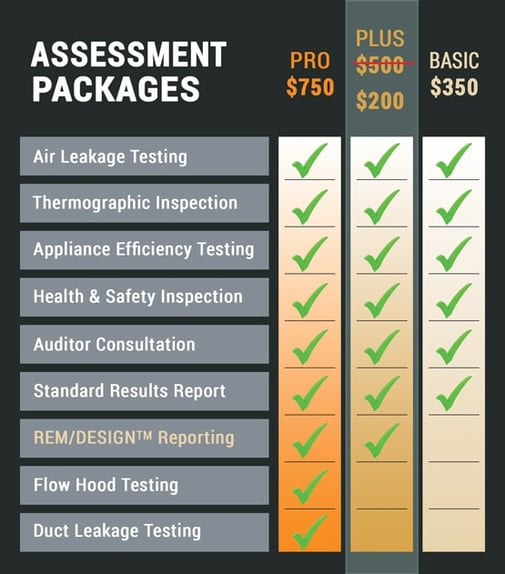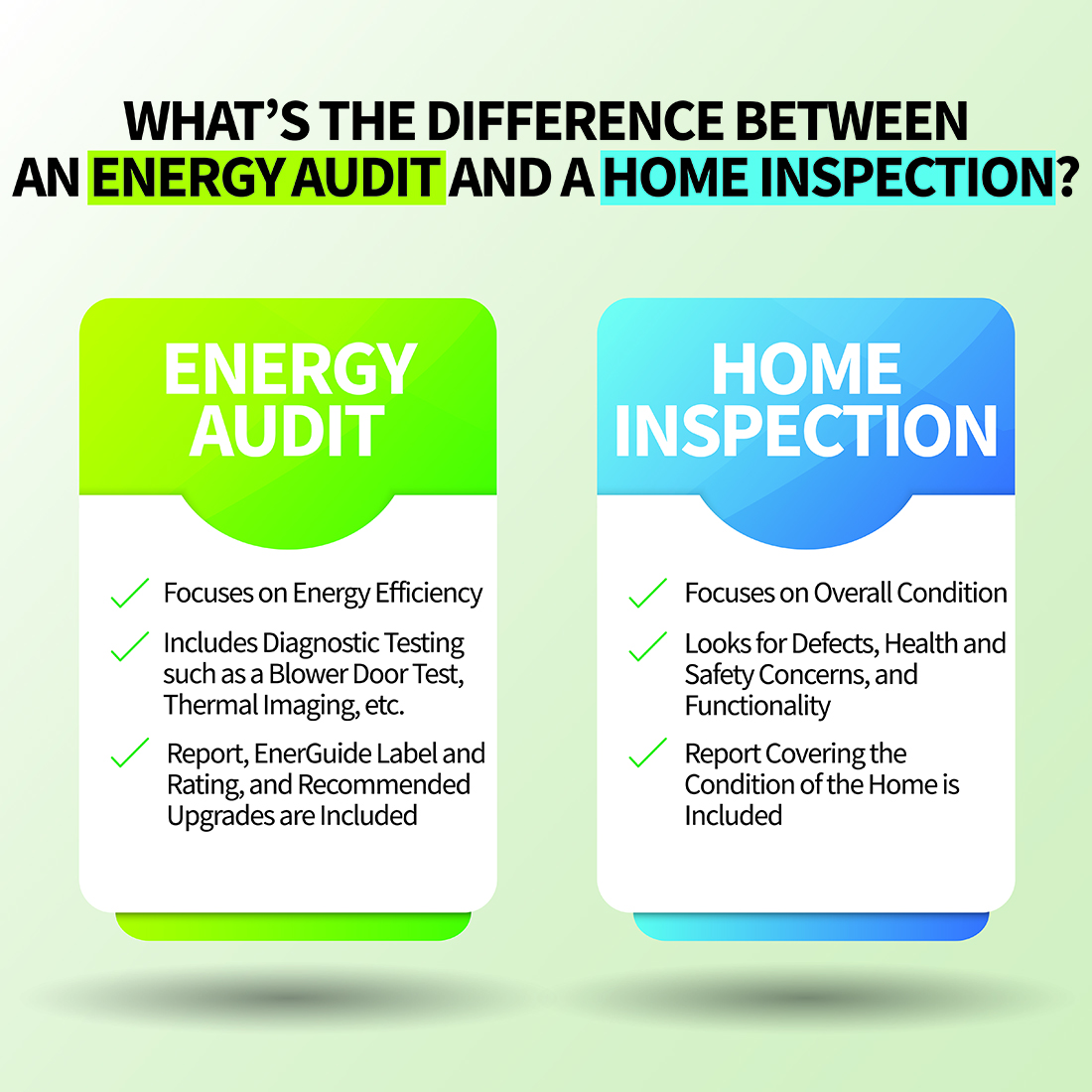Don’t skip energy testing south carolina: 10 compelling benefits
Don’t skip energy testing south carolina: 10 compelling benefits
Blog Article
The Function of Energy Screening in Achieving an Airtight Solution for Your Property
Energy testing is essential for residential property proprietors looking for to create an impermeable setting. It determines air leaks and inefficiencies that can endanger energy efficiency. Usual offenders consist of spaces around doors and home windows. Making use of approaches like blower door tests and thermal imaging, property owners can get insights into their building's susceptabilities (energy testing taylors sc). Recognizing these searchings for is crucial. What actions should be taken as soon as air leakages are determined? The answers hold the secret to enhanced comfort and financial savings
Understanding Energy Testing and Its Significance
Energy screening plays a crucial function in evaluating the airtightness of structures and frameworks. By gauging air leakage, this approach provides crucial insights into a home's power effectiveness, thermal convenience, and total efficiency. Airtight structures decrease energy usage, making certain that cooling and heating systems run effectively. This testing procedure typically involves methods such as blower door tests, which create a regulated environment to recognize unintended air pathways.Understanding the importance of power screening extends past conformity with building ordinance; it cultivates a positive method to sustainability. Determining air leakages early can cause timely remediation, eventually boosting indoor air quality and reducing utility prices. Furthermore, power screening adds to the long life of structure products by minimizing wetness buildup and relevant damages. As awareness of environmental effect boosts, power screening becomes an essential device for house owners and building contractors aiming for high-performance homes.
Usual Resources of Air Leaks in Residence
Recognizing typical sources of air leakages is important for improving a residential property's power efficiency. These leakages typically occur in different locations of a structure, considerably impacting cooling and heating expenses. Usual offenders consist of gaps around doors and home windows, where seals might weaken over time. Furthermore, electric outlets and switches can create paths for air exchange if not effectively protected. Basements and attic rooms are likewise regular resources, specifically where wall surfaces meet the foundation or the roof. Other prospective leakage points include pipes infiltrations, venting systems, and the locations surrounding chimneys. Additionally, older buildings may struggle with weakened structure products, boosting susceptability to air seepage. By identifying these typical sources, property proprietors can take aggressive actions to secure leakages, therefore enhancing total power efficiency and comfort within their areas. Addressing these concerns is a vital component of developing an airtight remedy for any type of property.
Techniques of Energy Screening: Blower Door and Thermal Imaging
Reliable power testing techniques, such as blower door examinations and thermal imaging, play an essential function in identifying air leakages within a building. The blower door test includes pressurizing or depressurizing a building to measure air flow and recognize leakages. A calibrated fan is mounted in an exterior entrance, and the resulting stress distinction highlights locations of undesirable air seepage. This technique evaluates the general airtightness of the structure.Thermal imaging matches blower door tests by aesthetically spotting temperature variations on surface areas, disclosing covert air leaks. Infrared video cameras catch heat loss or gain, allowing for precise recognition of issue locations, such as badly protected wall surfaces or gaps around home windows and doors. air tight solutions. With each other, these techniques supply a comprehensive assessment of a building's energy effectiveness, making it possible for homeowner to address air leakages efficiently and enhance general efficiency
Benefits of Identifying Air Leaks
Recognizing air leakages provides substantial benefits for power efficiency and interior convenience. By securing these leaks, structures can reduce power usage, bring about lower energy bills and a decreased carbon footprint. Additionally, enhanced airtightness adds to a much more secure indoor setting, enhancing overall comfort for residents.
Energy Performance Improvements
Detecting air leakages is important for improving power efficiency in buildings. Recognizing these leakages enables homeowner to address locations where conditioned air gets away or unconditioned air gets in, causing significant energy savings. By sealing spaces and splits, structures can keep a regular temperature, decreasing the need on heating and cooling systems. This not only lowers energy bills yet likewise decreases the ecological effect related to boosted energy usage. Additionally, power performance renovations add to a structure's overall sustainability, making it a much more attractive alternative for eco-conscious customers or occupants. Inevitably, prioritizing air leak detection Read More Here and removal helps enhance power use, advertises responsible resource monitoring, and supports long-lasting economic benefits for homeowner.

Boosted Indoor Convenience
Addressing air leakages not just leads to energy financial savings but additionally considerably enhances interior convenience. When air leaks are successfully identified and sealed, temperature level law within a residential property comes to be more efficient. This causes regular indoor temperatures, removing cold drafts in winter and hot places in summer. Improved insulation additionally reduces environmental pollution from outdoors, creating a quieter and more peaceful living atmosphere. Additionally, boosted air top quality is achieved by lessening the seepage of outside toxins, irritants, and humidity, adding to the general health of passengers. Property owners experience a more pleasant environment, cultivating relaxation and performance. Eventually, recognizing and correcting air leakages is necessary for attaining excellent indoor comfort throughout the year.
Just How Power Testing Enhances Convenience and Indoor Air Quality
Power screening plays a vital role in enhancing temperature level law within indoor areas, ensuring a regular and comfy atmosphere. By sealing and determining air leaks, it also substantially decreases the infiltration of toxins, thus improving interior air quality. This double influence fosters general wellness for passengers.
Boosted Temperature Regulation
Efficient temperature level regulation substantially adds to both comfort and indoor air top quality, making it an important focus for contemporary structure design. Power testing plays an essential role in attaining this guideline by identifying areas where warmth loss or gain occurs, permitting targeted improvements. By guaranteeing a closed structure envelope, energy screening aids keep regular indoor temperatures, decreasing the requirement for excessive heating or air conditioning. This stability enhances occupant convenience, as changes in temperature can result in pain and dissatisfaction. Furthermore, effective temperature control can improve indoor air quality by lowering the danger of condensation and mold and mildew growth, which grow in uneven temperature conditions. Energy screening is crucial for enhancing temperature level administration in business and residential homes.
Minimized Contaminant Infiltration
While many variables add to interior air quality, decreased toxin infiltration stands out as a vital element that energy screening can considerably enhance. Energy testing recognizes air leaks and weak points in a building's envelope, which may enable outside pollutants, irritants, and moisture to go into indoor rooms. By securing these leaks, homes can effectively restrict airborne contaminants, leading to a much healthier environment. Improved airtightness not only boosts convenience but also lessens the burden on home heating and cooling down systems, causing energy cost savings. Additionally, minimized contaminant infiltration promotes better total health for passengers, as cleaner air promotes respiratory health and decreases allergy signs and symptoms. Energy testing plays a crucial role in developing both a health-conscious and energy-efficient living area.
The Financial Impact of Power Screening on Energy Expenses

Actions to Take After Power Screening Results
Once energy testing results are in, home owners should thoroughly review the findings to identify one of the most effective path onward. The very first step includes identifying the areas that need enhancement, such as air leaks or insulation deficiencies. House owners should after that prioritize fixings based upon the extent of the issues and their potential influence on energy efficiency.Next, it is recommended to speak with specialists who specialize in energy efficiency to create a complete activity strategy. This might include options like securing gaps, adding insulation, or upgrading windows and doors.After implementing the necessary modifications, a follow-up energy examination can identify the efficiency of the repairs. Constant surveillance is likewise necessary to guarantee that the residential or commercial property keeps its airtight condition with time. By adhering to these steps, property owners can substantially enhance their building's energy effectiveness, causing decreased energy costs and enhanced convenience.
Often Asked Inquiries
Just how Frequently Should I Conduct Power Checking on My Property?
The frequency of energy testing need to usually be every few years, or complying with significant remodellings. Normal analyses aid identify efficiency enhancements and assure that the residential property keeps optimal power efficiency in time, adjusting to changing problems.
Is Power Screening Necessary for New Constructions?
Power testing is essential for new building and constructions, as it identifies possible air leakage and insulation issues - air tight solutions. Implementing these examinations assurances power performance, boosts interior comfort, and satisfies structure codes, inevitably resulting in lasting expense financial savings
Can I Carry Out Power Screening Myself?
Power screening typically calls for specialized equipment and know-how. While some homeowners might attempt basic assessments, specialist services assure accurate results and efficient recognition of concerns, ultimately leading to much better power performance and comfort in living areas.
What Is the Cost of Specialist Power Screening Services?
The cost of expert power testing services typically ranges from $300 to $1,500, relying on residential or commercial property dimension, location, and intricacy. Property owners should think about prospective power cost savings when evaluating the investment in these solutions.
For How Long Do Energy Screening Results Usually Last?
Power testing results generally continue to be valid for one to three years, depending on aspects like building alterations and environmental changes. Regular updates are recommended to assure accuracy and keep effective energy effectiveness requirements. Efficient power testing approaches, such as blower door tests and thermal imaging, play a vital role in detecting air leaks within a residential property. Recognizing these leakages allows building owners to resolve areas where conditioned air gets away or unconditioned air enters, leading to considerable energy financial savings. click here for more Power testing determines air leaks and weak factors in a structure's envelope, which might allow outdoor contaminants, irritants, and dampness to enter indoor areas. As home owners increasingly look for to lower their energy expenditures, the role of energy screening comes to be necessary in determining inefficiencies and leaks. House owners should after that focus on fixings based on the intensity of the concerns and their possible impact on power efficiency.Next, it is recommended to consult with experts that specialize in power efficiency to devise a comprehensive action plan.
Report this page